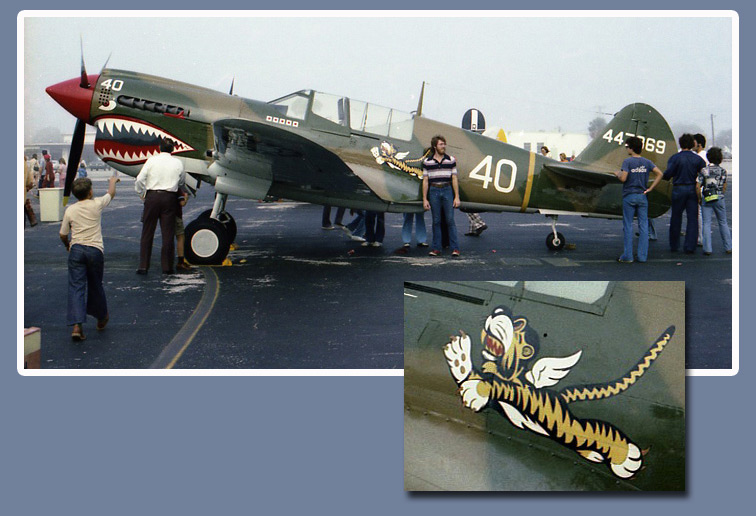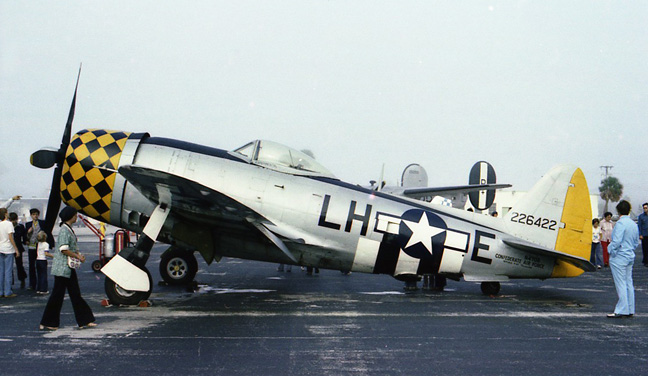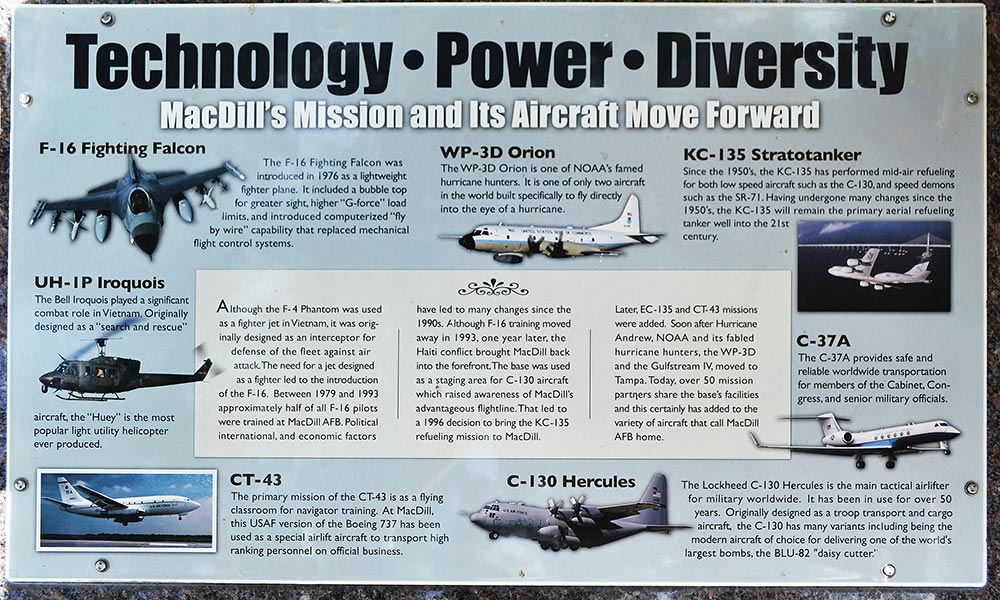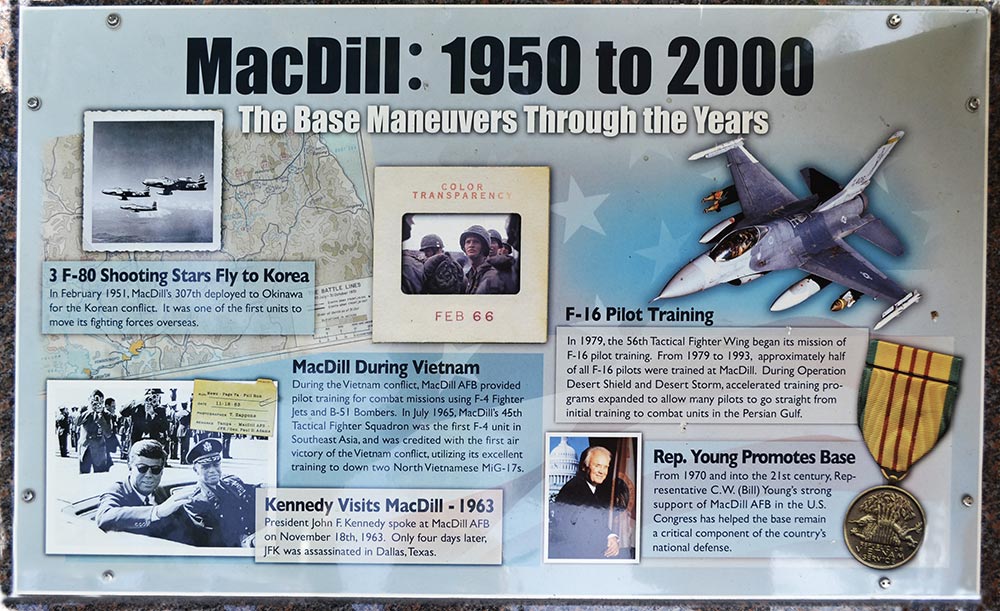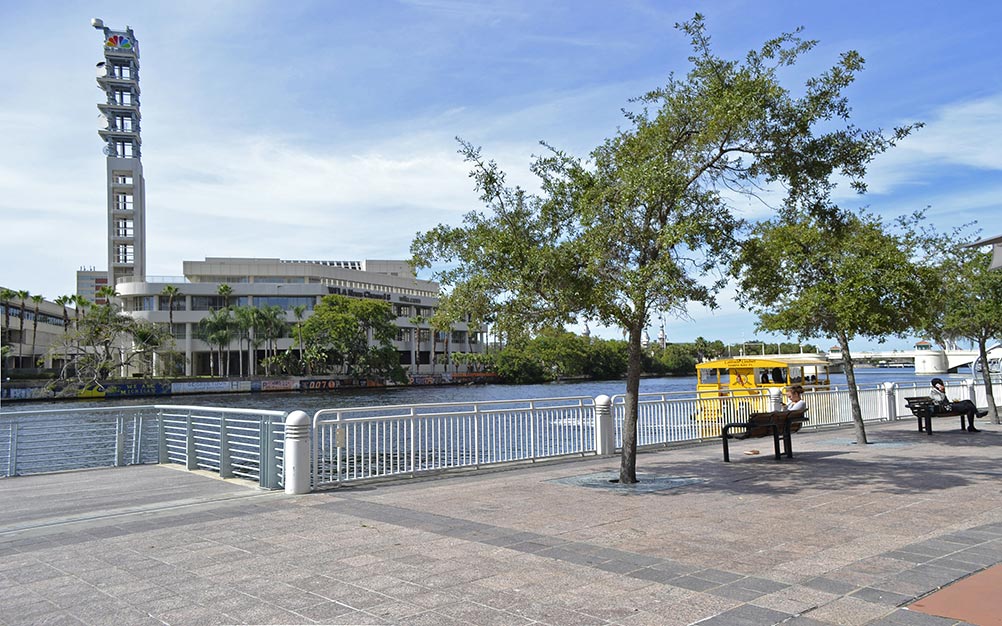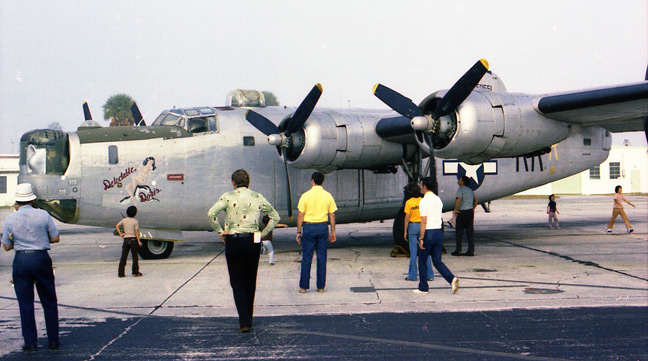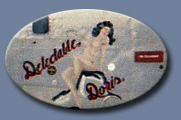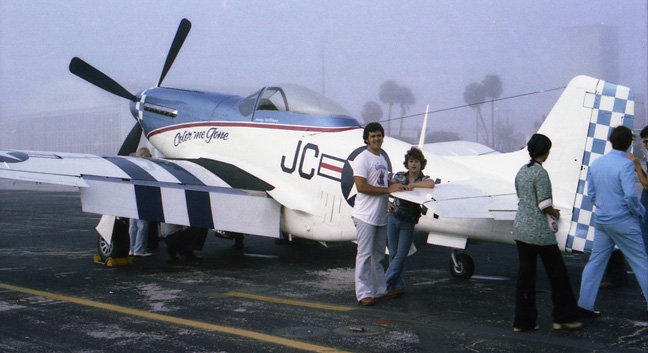|
|
|
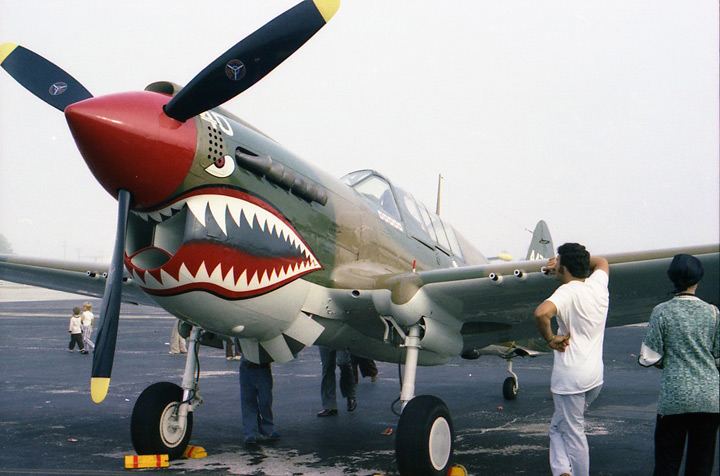 Curtiss P-40 Warhawk
|
|
|
Flying Tigers was the popular name of the 1st American Volunteer Group (AVG) of the Chinese Air Force in 1941-1942. They were mostly former United States Army (USAAF), Navy (USN), and Marine Corps (USMC) pilots and ground crew, recruited under Presidential sanction and commanded by Claire Lee Chennault. Curtiss P-40 fighter aircraft of the Flying Tigers, with their iconic shark face. Not seen here is the 12-point sun of the Chinese Air Force. which was located on the underside of the wing.
Read more about the Flying Tigers |
|
|
P-47 Thunderbolt Also known as the "Jug," it was the biggest, heaviest, and most expensive fighter aircraft in history to be powered by a single reciprocating engine. It was one of the main United States Army Air Forces (USAAF) fighters of World War II, and served with other Allied air forces. |
|
| MacDill Park on the Riverwalk, 100 N. Ashley Drive
|
|
|
A view from MacDill Park looking west
across the Hillsborough River
|
|
|
The B-24 Liberator was an American heavy bomber, designed and largely built by the Consolidated Aircraft Company of San Diego, California. It was produced in greater numbers than any other American combat aircraft of World War II, and still holds the record as the most-produced American military or naval aircraft.
|
|
|
"Color Me Gone" |
|
|
Special thanks to Jamie Urso for plane identifications |
|
|
Airshow1 | Airshow2 | Airshow3 | Airshow4 | Tampapix Home |
|
|
Photos of MacDill Field operations during WW2 from Drew Field's weekly newspaper, Christmas 1942 |
|
